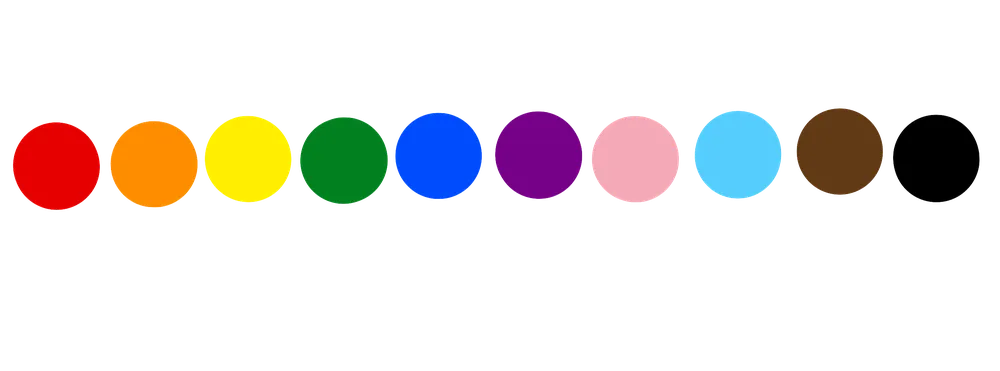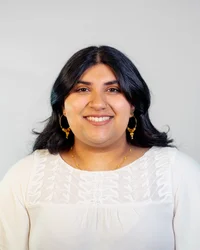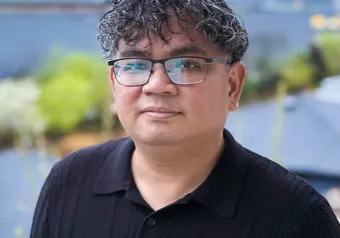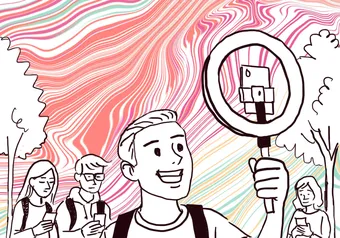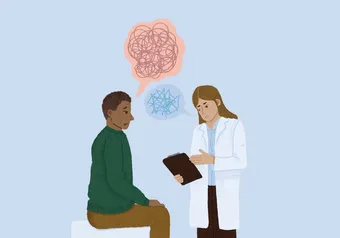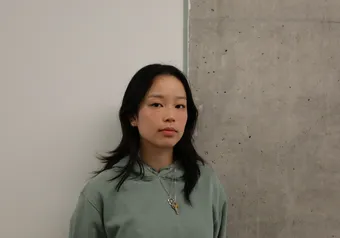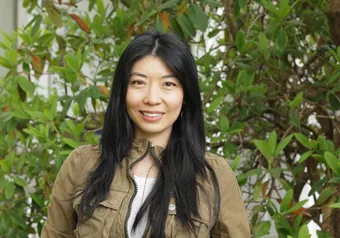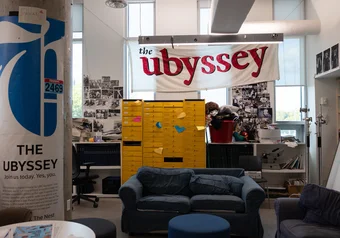As a rare November sunset cast a golden glow across the freshly barren trees along Main Mall on a Friday evening last term, a group of students covered the usual red-and-white Engineering Cairn with light blue, pink and white paint, and wrote a message in black.
Trans rights are human rights.
This wasn’t a random group of students vandalizing the Cairn — it was Gears and Queers, a club for Queer engineering students at UBC, painting the campus landmark with the colours of the Trans flag ahead of Trans Day of Remembrance (TDOR) on November 20.
Decorating the Cairn for TDOR has become an annual tradition for Gears and Queers. The group has hosted an annual painting event on November 17 for the past three years that draws out not only Queer engineering students, but those in other faculties like computer science or physics.
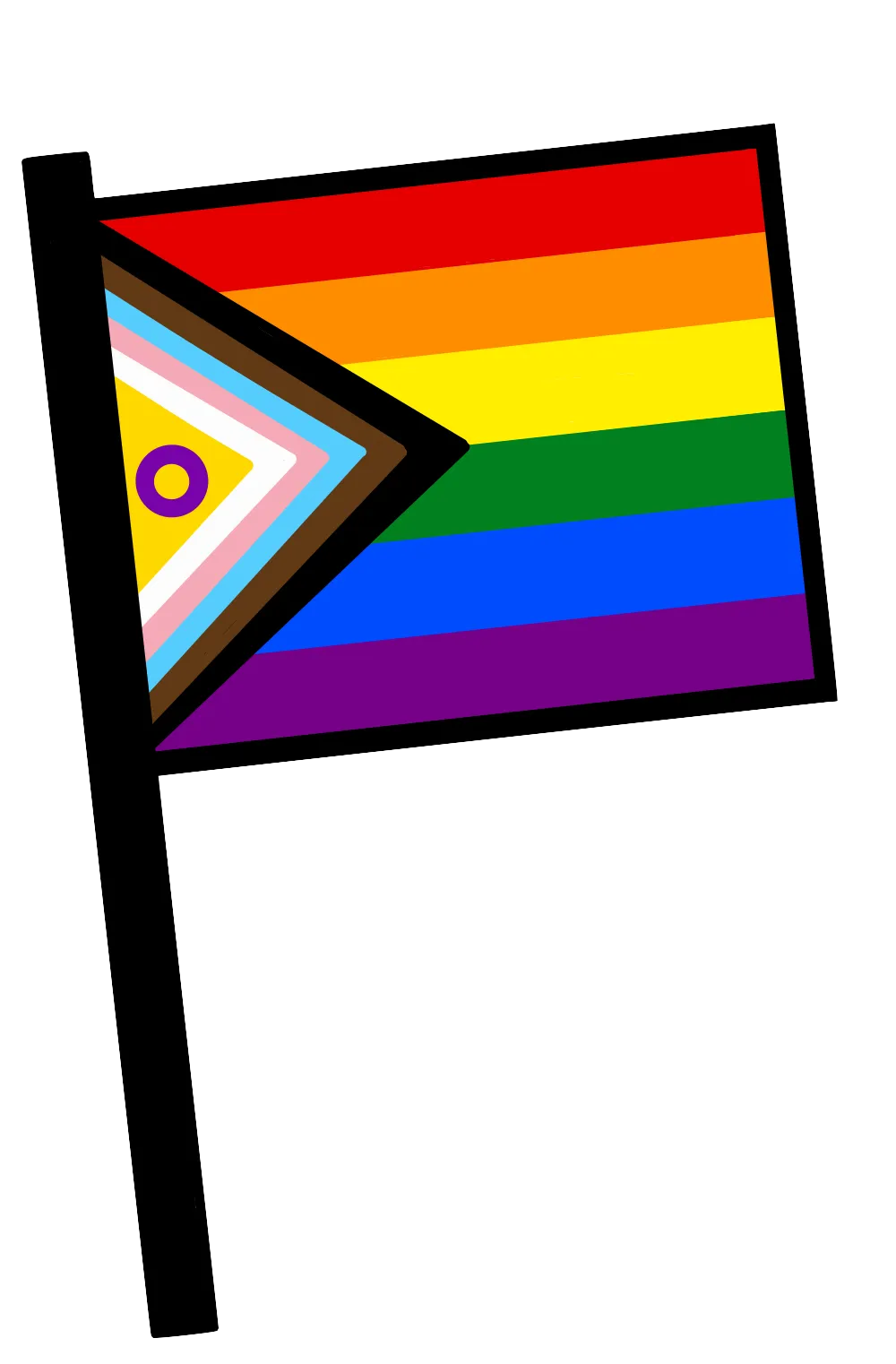
For club president and third-year electrical engineering student Ana Bandari, painting the Cairn is her favourite part about Gears and Queers.
“It's so amazing to see a community come together. And, I don't know, do something that's visible,” Bandari said in an interview with The Ubyssey. “It's nice seeing there's more of us.”
Bandari said that while most people are respectful of the Cairn after it has been painted for TDOR, there are not many non-Queer people or allies participating in the decorating.
“I even invited some of the cis-het men,” said Bandari. “And they're like, ‘No, I don't feel like I would be welcomed in that space.’”
Bandari said she thinks this discomfort comes from a misunderstanding about Queer people due to a general “bro culture” within engineering spaces.
According to research from Columbia University, Queer people are estimated to be 20 per cent less represented in STEM fields than statistically expected. There is no federal statistic on 2SLGBTQIA+ engineering students.
At UBC, changing perceptions about Queerness in engineering frequently falls on the shoulders of students or student-run clubs like Gears and Queers.
‘Having that space’
Jessica Hohner, a then-engineering student, founded Gears and Queers in March 2016 after attending a diversity in engineering conference in Waterloo where she met students from McMaster and Ontario universities who had created clubs specifically for Queer engineering students.
“It just seemed like a really cool idea,” Hohner told The Ubyssey in a September 2016 interview. “I put out a survey to see if there was interest and there really was, so we started the club.”
In 2016, Hohner said the club serves to provide a social space and support group for Queer engineering students. Eight years later, Bandari said the club’s purpose has stayed largely the same.
“We’ll just study together and talk … ‘Oh, what's it like, you know, in your department,’ or just getting to meet other Queer people in engineering,” Bandari said. “It's really about having that space because it's not going to be present in your classrooms.”
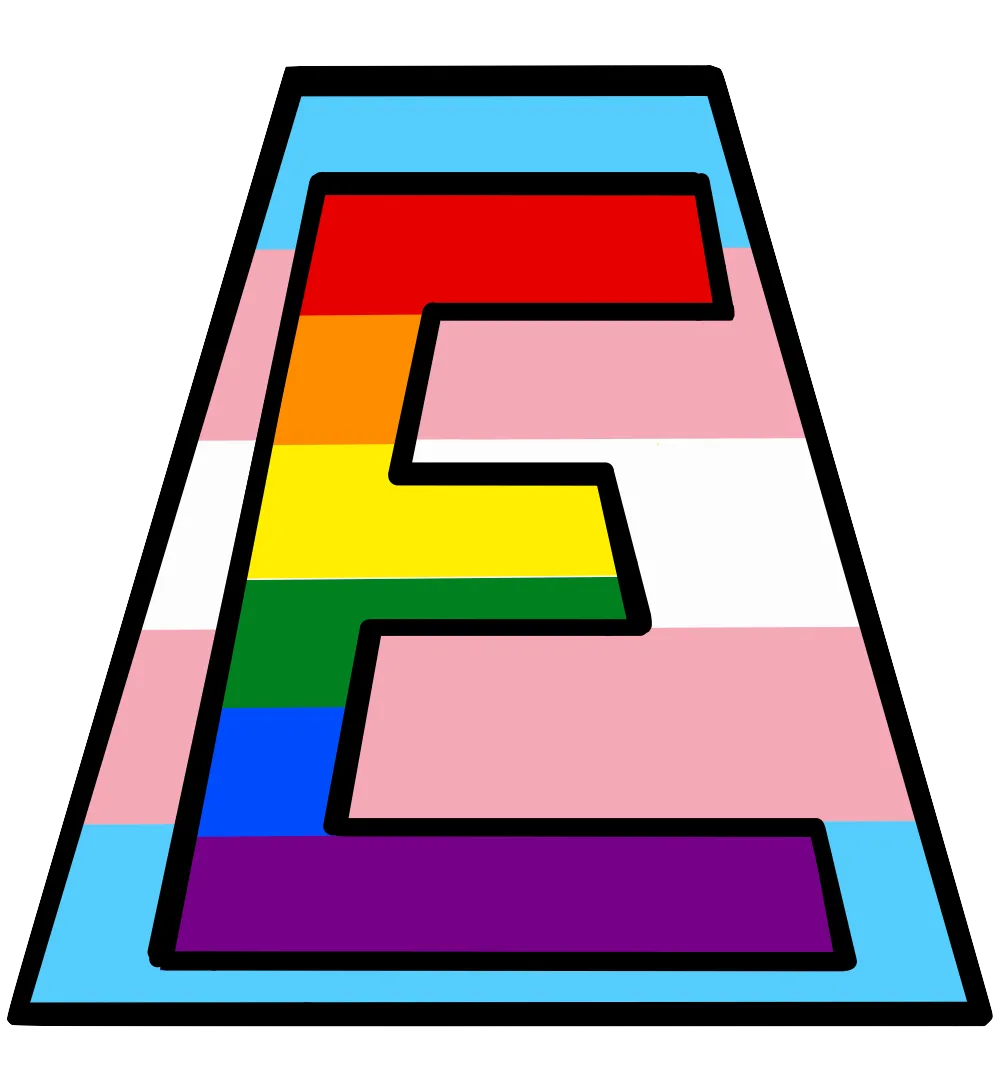
Speaking from her experience as a Queer woman in engineering, Bandari said she often hides her Queer identity in her classes, whether that’s by changing the way she dresses or speaks.
This can have an impact on Queer students’ academic performances, Bandari said, particularly when working on design teams or in group projects that are much smaller and involve more peer interactions.
Studies on Queer and Trans students at universities have found that feeling accepted on campus and feeling supported by administrators greatly improves these students’ academic performance and retention rates.
“Your teammates might be making homophobic remarks, and then you just feel worse and there's not nothing you can do about it,” she said, adding she doesn’t think her professors would do anything to help due to their focus on academics.
This is what makes clubs like Gears and Queers important, Bandari said, even with other student clubs like the Pride Collective dedicated to supporting Queer students.
“Nobody will be able to understand the struggles as closely as an engineering student,” Bandari said. “It sucks to be in a really bro culture and not express your true identity and be unapologetically true to yourself.”
Most of those who come to Gears and Queers are Queer themselves, but Bandari hopes that increasing the club’s presence within the faculty, whether through social media or hosting panels and conferences, will draw in more allies.
“[It’ll] hopefully make it more normal for other people,” Bandari said. “It's just kind of changing the culture within engineering.”
Finding community solo
Gears and Queers is not the only place Queer engineering students have found community — some have found friendships and connections through more informal ways.
In November 2023, Alex Li, a third-year engineering physics student, came out as Trans to her classmates on an engineering physics program Discord server after months of figuring out her identity. Li had first come out to two close friends in May 2023 — which she said was helpful — but the months long process of working through her identity took a toll on her mental health, leading her to take fewer courses and participate in less extracurriculars.
But, Li’s November 2023 message on her program’s Discord server received positive reactions from her peers. Li said they felt widely accepted.
“When it comes to acceptance, I feel like everyone's been, at the very least, chill with it … I don't feel that it hurts me anyway.”
Li said the size of her program — there are only 65 students in her year — and the academically challenging curriculum has forced people to form connections, helping foster inclusivity.
“We all saw each other working so hard,” Li said, specifically referring to the second-year engineering physics capstone project in which students work together to construct a robot.
“No one who goes through that experience can come out on the other side and still question any other classmates’ good character or competence.”
There are also a lot of openly Queer people and women in their year, Li said — something that Bandari said is quite different in her program.
Due to these already existing connections within her program, Li said she has not sought out clubs like Gears and Queers to find other Queer people.
“I already organically have people that, if not quite share my experiences, at least have some shared experience being LGBTQ, and so I do not need to seek out like dedicated support for that kind of community.”

Still, Li acknowledged that things may be different for Queer students in larger programs with less group work or diversity and that having a space for students to feel normal and openly Queer is important.
“It would be a massive help for [Queer students’] ability to survive university in general.”
Robert Jarvi, a third-year computer engineering student, echoed Li’s sentiments about creating connections with Queer students. He said he’s found Queer friends in engineering but, in his experience, there seems to be a lack of gay men.
“It’s kind of like, ‘Oh there’s no … people like me,’ which is unfortunate,” said Jarvi.
Jarvi said when he sees Queer people in his classes, he wants to create friendships with them. He noted befriending a Queer TA — “I was like ‘Great! … I’m going to [their] office hours now.’”
When it comes to support from the department, Jarvi said it should start with professors’ open acceptance of Queer students.
“Even if [professors are] the most supportive people in the world, like the biggest allies, that's not associated with how they convey themselves,” said Jarvi. “When you have profs that are more open … that’s associated with a lot more positive traits.”
‘Diversity is critical’
For UBC Applied Science Associate Dean, Equity, Diversity and Inclusion (EDI) Sheryl Staub-French, UBC’s engineering space is very different from the ones she was part of as a student.
“I identify as a lesbian. I've gone through my whole engineering career as a lesbian, and I understand the student experience at least from that perspective,” said Staub-French.
When it comes to including marginalized communities, like Queer people, in engineering, Staub-French said creating “inclusive spaces” is integral. Currently, UBC applied science doesn’t hold high school outreach programs for Queer students, but has established programs for girls and BIPOC students.
Despite this, Staub-French said creating institutional access to EDI initiatives has been a priority for the faculty.
As the first UBC applied science associate dean of equity, diversity and inclusion, Satub-French said she strives to “create the systems and structures and really facilitate the conversations that need to happen to ensure that we're embedding equity, diversity and inclusion in all aspects of academic life.”
Bandari said that part of her APSC 100 class — a first-year course all engineering students take — focused on the importance of diverse teams in engineering, but that many people didn’t take that part of the course seriously.
“Because it's not academic, people don't take it seriously. They brush it off,” she said, adding she now feels obligated to hold her teammates accountable.
“There should be more done by the department to not just make it feel like you're just solely doing academics. I think at some point, there also needs to be some statements … of inclusivity and conflict resolution.”

Staub-French also said UBC Applied Science hosted a Pride event at UBC last year. In 2019, the university as a whole was banned from the Vancouver Pride Parade after hosting an anti-SOGI speaker.
Additionally, Staub-French said her office strives to track diversity across applied science units “because we want to make sure the diversity of our units reflects the society we serve.”
“Diversity is critical to coming up with good engineering solutions,” said Staub-French. “Engineering is a team sport, so if you don't have a diverse team, you're not going to end up with the best solution.”
Staub-French is also the Gears and Queers faculty advisor. She said that group is a key stakeholder the faculty tries to support by providing funding for community events.
“We have a strong emphasis around inclusivity,” said Staub-French. “We try to use really inclusive language in our programming to ensure that we're really attracting a diverse population.”
She also said UBC applied science funded students attending the first ever national queer educators event in Toronto.
Having support as a marginalized person in engineering is “critical,” according to Staub-French.
“It's critical that we provide these spaces for students to come together and make sure that they're finding community.”
Finding joy in engineering
In the months since coming out, Li said she has been invited to speak at many women in engineering events and events for prospective engineering physics students.
Li recalled one panel fondly in their interview, smiling as they told their story.
At the prospective students panel in early March, an audience member asked how many women were in engineering physics.
“Sixteen,” said one of the other people on the panel according to Li.
“That number has increased by one,” Li chimed in.
First online
Share this article


